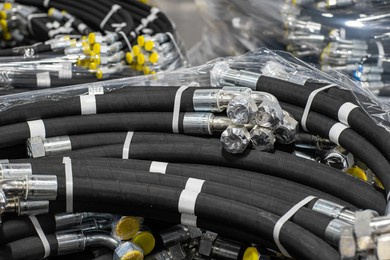Causes and preventive measures of failure of high-pressure oil hoses
2023-05-26 09:06:50
Common causes of high pressure oil hose failures
High-pressure oil hoses may have some failures during use, and common causes include hose wear, corrosion, blockage, and leakage. Long-term friction and vibration may lead to thinning of the hose wall thickness, and even wear out cracks. Corrosion is caused by factors such as impurities, moisture and chemical reactions in the fuel oil, which can damage the surface and internal structure of the hoseline. A clog can be caused by deposits or impurities in the fuel, preventing the proper flow of fuel. Leaks can be caused by loose hose connections, worn seals, or damage to the hose itself.
Preventive measures for high pressure oil hose failure
In order to prevent the failure of the high-pressure oil hose, the following measures can be taken. First of all, regular inspection and maintenance, including cleaning hoses, replacing seals and checking the tightness of connection parts. Regular inspections can detect problems in time and take corrective measures. Second, maintain the quality and cleanliness of the fuel. Use high-quality fuel and replace the fuel filter regularly to reduce the damage of impurities to the high-pressure oil hose. Also, take care to avoid using low-quality fuel or adding unsuitable additives to prevent corrosion and clogging problems. In addition, avoid long-term overloading of the engine to reduce the pressure and vibration of the high-pressure oil hose and reduce the risk of failure.
Emergency treatment of high pressure oil hose failure
If the high-pressure oil hose breaks down, taking emergency measures in time can reduce losses. First, stop using the engine immediately and stop the vehicle in a safe place. Secondly, check whether the connection of the high-pressure oil hose is loose, and if it is loose, the connection should be tightened. If a leak is found, temporary fixes can be used, such as temporary sealing with tape, and the vehicle should be sent to a repair shop as soon as possible for repairs. It is important not to try to fix it yourself or use unsuitable temporary fixes that could cause more serious damage or a safety hazard.